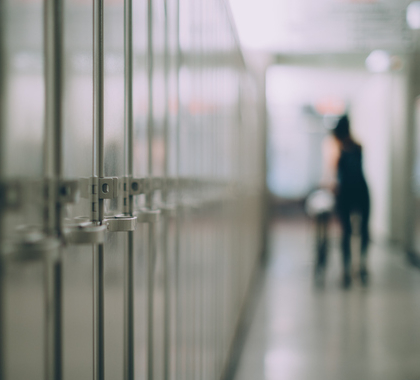The mass shooting at Columbine High School 20 years ago this April 20, and many subsequent incidents of violence in government schools, have led parents and policymakers to look for ways to make schools safer for their children.
Bullying and physical violence are common problems facing parents today, says Vicki Alger, a senior fellow with the Independent Women’s Forum and a policy advisor to The Heartland Institute, which publishes Budget& Tax News.
“We mustn’t forget that school safety still remains a pressing issue for too many students today,” said Alger. “Around one in five middle- and high-school students report being bullied. Four out of five students report violent incidents at their schools.”
Immediate Solution
Child Safety Accounts (CSAs), education savings accounts parents can use to pay for tuition, fees, and other education-related expenses at government schools, private schools, and for homeschooling, would bring much-needed relief, says Alger.
“CSAs would allow parents to move their children immediately to a safer school—be it private, parochial, or public—as soon as they feel the public school their child is currently attending is too dangerous to their child’s physical or emotional health,” said Alger.
Parents should be allowed to move their children without delay, says Alger.
“Students should not have to wait years at a time or become victims of violent crime before their parents are allowed to transfer them to safer schools,” Alger said.
Florida Gives Parents Option
One state has already taken a step to provide students an escape hatch, says Alger.
“Florida’s Hope Scholarship program empowers parents to act without having to wait for permission from school officials,” said Alger. “Any student who’s been subjected to any of a wide range of school safety incidents is eligible for a scholarship to another public or private school of their parents’ choice,” Alger said.
“Not only does the program give families safer options immediately, it also introduces powerful incentives for schools and districts to take swift, practical steps to keep all students safe year after year—or risk losing them to safer schools,” said Alger.
Child Safety Accounts could improve on Florida’s Hope program, says Alger.
“CSAs could go a step further by allowing parents to transfer their children if school officials fail to implement basic active-shooter prevention policies and practices,” said Alger.
“Such commonsense steps could and should be taken right now, and that is why Child Safety Accounts are so important,” said Alger.
Says Choice Cuts Violence
Education choice reduces school violence, says Corey A. DeAngelis, an education policy analyst at the Cato Institute.
“The evidence suggests that school choice is an excellent mechanism to reduce school violence,” said DeAngelis. “For example, the most recent experimental evaluation of the D.C. voucher program finds that students using the program—and their parents—were over 35 percent more likely to report that they were in very safe schools.
“Families choose schools based on safety,” said DeAngelis. “No parent wants their kid to end up in a dangerous school. And private schools must cater to the needs of parents if they wish to stay in business. On the other hand, public schools hold a strong monopoly that shields them from competitive pressures.”
Widespread Bullying Problem
School safety isn’t a problem for just a tiny minority of students, says Timothy Benson, a Heartland Institute policy analyst.
“Nearly 21 percent of all students ages 12 to 18 report being bullied at school,” said Benson. “While that statistic represents important progress since 2005, when 28 percent of middle- and high-school students reported being bullied, it’s little consolation to the estimated 6.1 million students who are being bullied today.
“Findings from the CDC indicate that the overall high-school bullying rate is 20 percent,” Benson said.
Columbine Survivor Introduces Bill
Legislation that would establish CSAs in Colorado has been introduced in the Colorado General Assembly by state Rep. Patrick Neville (R-Castle Rock), who was a sophomore at Columbine High School when the shooting occurred.
H.B.19-1112, introduced on January 15, 2019, would enable parents of students affected by school safety incidents to move their children immediately to a safe school.
The CSAs would be funded using the state’s share of spending per pupil that would otherwise go to the child’s government school. Parents would apply for scholarship money administered by an independent entity under contract with the state and would receive the funds in their child’s account.
The bill would also create an income tax credit for the parents of qualified students to pay eligible expenses above the amount provided through a CSA, and a tax credit for individual or corporate donations to fund the CSAs.
Extending Safety
The Child Safety Account Act would challenge the norm and provide safer education for students in Colorado, says Neville.
“Incidents of all forms of bullying are tragically too common in our public-school system, but students and their families should not feel helpless,” said Neville. “That is why I have introduced the CSA legislation.”
High-income parents have safer school options, and this bill would give that to others, says Neville.
“The freedom of choice in education that is afforded to wealthy families should be extended to all families,” said Neville.
Joe Barnett ([email protected]) is a research fellow with The Heartland Institute.
Official Connection:
Colorado state Rep. Patrick Neville (R-Castle Rock): https://leg.colorado.gov/legislators/patrick-neville
Internet Info:
Timothy Benson and Vicki Alger, “Protecting Students with Child Safety Accounts,” Policy Brief, The Heartland Institute, April 25, 2018: https://heartland.org/publications-resources/publications/protecting-students-with-child-safety-accounts





